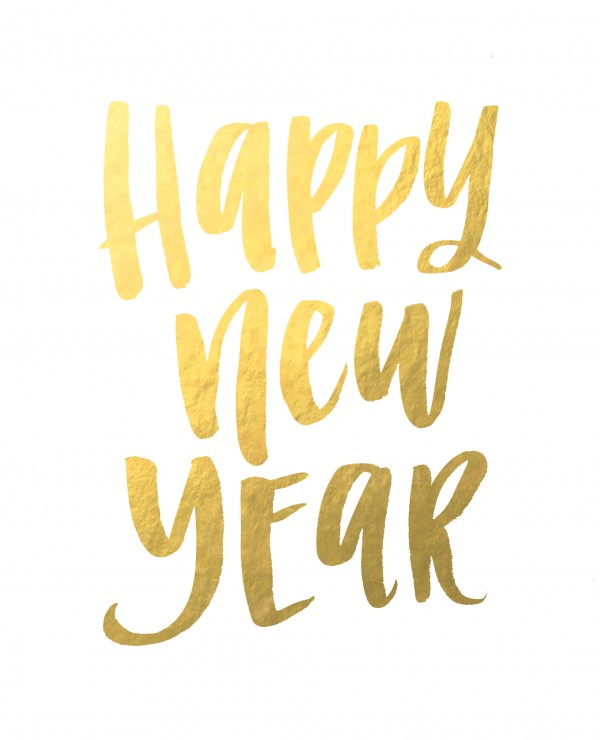
Welcome to the final installment of my New Year’s Resolutions for 2017 series!
You’ve probably caught on that while a lot of my resources are resolution-specific, that’s not necessarily the point of this series. I’m not a fitness guru, a professional organizer, always at the peak of awareness, and without habits that I want to break.
The point is that there are things you can do to change your behavior—regardless of the resolution—and that some of those things might work for you, and others might fall flat.
I was pleased to discover that one happiness expert, Gretchen Rubin, already came up with names for a lot of those behavior change strategies in her book Better Than Before. I’m by no means trying to rip off Rubin here—I’ve been working on a lot of these habit strategies for a long time—but I will borrow some of her terminology.
Let’s review.
Scheduling: Setting a specific time for something to occur
While the timing of my workout might vary from day to day (which I’ve discovered I have the self-discipline to allow without it derailing me), I write down what workout I’m going to do in advance. Beachbody programs are incredibly helpful with this because all of them come with a calendar. I usually follow the calendar, but sprinkle in or substitute similar, non-program workouts for certain days. I also have my gym classes on my calendar just like any other appointment.
In terms of getting organized, Apartment Therapy’s January Cure utilizes scheduling since each weekday has its own assignment.
Accountability: A system of consequences
My Beachbody coach and Facebook group expect a check-in or a post-workout selfie from me almost every day. While I might not face any form of real punishment if I don’t do it, wanting to avoid the feeling of letting the hardworking group down is real motivation.
Last year, there was no accountability for me to do the January Cure. This year, I want to blog about my experience, so you, readers, are my accountability system. If in early February, you don’t see at least a “here’s what happened” post, call me out on it!
If you’re going to get woke, remember that The Revolution Will Not Be Televised. It might be helpful to join an organization that requires your participation—even a book club could do the trick.
To break a bad habit, I urge you to get creative in setting up some sort of accountability system to help you break your habit. Only you will know what will work for you, though!
Pairing: Doing an activity you want to do with one you don’t want to do
In Get Fit, I mentioned pairing socializing with a friend after my gym class. I actually usually want to go to those classes, but knowing that I’m meeting a friend at the gym and then getting dinner afterward sometimes gives me the push I need. (And I should point out that I don’t consider the social time a reward for my workout. More on that later.)
When Season 2 of Unbreakable Kimmy Schmidt came out, I only watched while I rode the stationary bike to prevent a serious binge. I was spent after two episodes and had to wait to watch more until I was ready to ride again.
Pairing is a useful and common tool for exercising more but I’m sure you can come up with some pairings that will set you up for success in other goal areas as well. Maybe “get woke” with one of those social justice podcasts on your next drive to work?
Rewards: Giving yourself a gift for your effort
I made the clarification in “Pairing” that socializing after the gym was not a reward. Why not? Because rewards are tricky. So often, we reward ourselves in a way that undermines the thing we’re rewarding ourselves for (dessert for successful dieting, shopping for saving money, you get the idea). But progress without a reward is a sad life, right?
Not if your success is your reward.
But if you absolutely need to reward yourself for a job well done (and for the record, I think that’s okay!), try to make it thematic, but something that bolsters your effort; not undermines it. For each of the resolutions in this series, consider:
- Fitness gear for exercising (I love to buy crazy workout pants)
- A label-maker, attractive storage bins, or a notebook for organizing your life
- A new book or magazine that challenges the way you think
- Something to make your drive more comfortable or entertaining (without your phone) like getting it detailed or buying an audiobook.
Another idea is to treat yourself for no particular reason from time to time, instead of tying your treats to your efforts/successes.
Convenience: Make the thing you want to do the easy choice
This is something I think about all the time. I’m always looking for new ways to “hack” my home into being healthier (remember my coffee tables?). I also mentioned getting Beachbody On Demand so that I can stick to my workouts while traveling (which is especially helpful in Airbnbs or hotels with gyms that leave something to be desired).
Think about your day and all of the hindrances to creating a new habit in order to reach your goals. What’s in your way (literally and metaphorically)?
Inconvenience: Make the thing you don’t want to do the hard choice
The flip side of convenience is inconvenience and it’s just as important, especially with breaking a bad habit. I suggested keeping your phone out of reach while you’re driving (or working, or at the dinner table, or sleeping, if you suffer with checking your phone at inappropriate times). Figure out how you can make your bad habits a little less convenient.
Distraction: Think about or do something else
Distraction is a great strategy for the break a bad habit resolution, especially when it involves quitting something. A few years ago, I did a Whole30 (when you eliminate grains, dairy, sugar, legumes, and alcohol from your diet for 30 days). Whenever I got a craving for a glass of wine or something sweet late at night, I busied myself with something else: I read, colored, or folded origami until the craving passed.
Try: Make an effort
All of these resolutions/goals/habits involve the same thing: trying. It might seem obvious, but when getting started is the hardest part, it’s easy to get overwhelmed and give up before you even try. Get clear on what your goal is, why you’re doing what you’re doing, what success looks like, and what strategies might work for you.
My alarm clock analogy in Get Woke is something you can apply to all kinds of resolutions. For example, breaking a bad habit:
When I was in college, I was addicted to sugar. One morning, I stopped at my usual coffee shop and started adding milk and sugar to my usual large coffee. At sugar packet number 13, I realized I had a problem (and I had no idea how or when I got to that point). I decided that the next day, I would use half the sugar, and the day after that, I’d cut it in half again. But when I tried my coffee with six packets of sugar, I figured adding zero packets couldn’t be much worse, so I stopped adding sugar altogether. Over time, I got used to unsweetened coffee and haven’t looked back since.
My point is that you might think you’re a baby steps kind of person, when really you’re a cold turkey kind of person (or vice versa). And the most important thing about all of these strategies is knowing yourself and what will and won’t work for you. Oh yeah, and trying.
***
I wish you the very best of luck on whatever your New Year’s resolutions may be. Please keep me posted on what tried-and-true and new strategies work for you in the comments. (Just don’t do it while you’re driving.)
Happy New Year! Here’s to a successful 2017!

Hey! This post is part of a series. Check out the rest of them here:
- New Year’s Resolutions for 2017: A Series
- New Year’s Resolutions for 2017: Get Fit
- New Year’s Resolutions for 2017: Get Organized
- New Year’s Resolutions for 2017: Get Woke
- New Year’s Resolutions for 2017: Break a Bad Habit
- New Year’s Resolutions for 2017: Habit How-To (you are here!)





5 Replies to “New Year's Resolutions for 2017: Habit How-To”